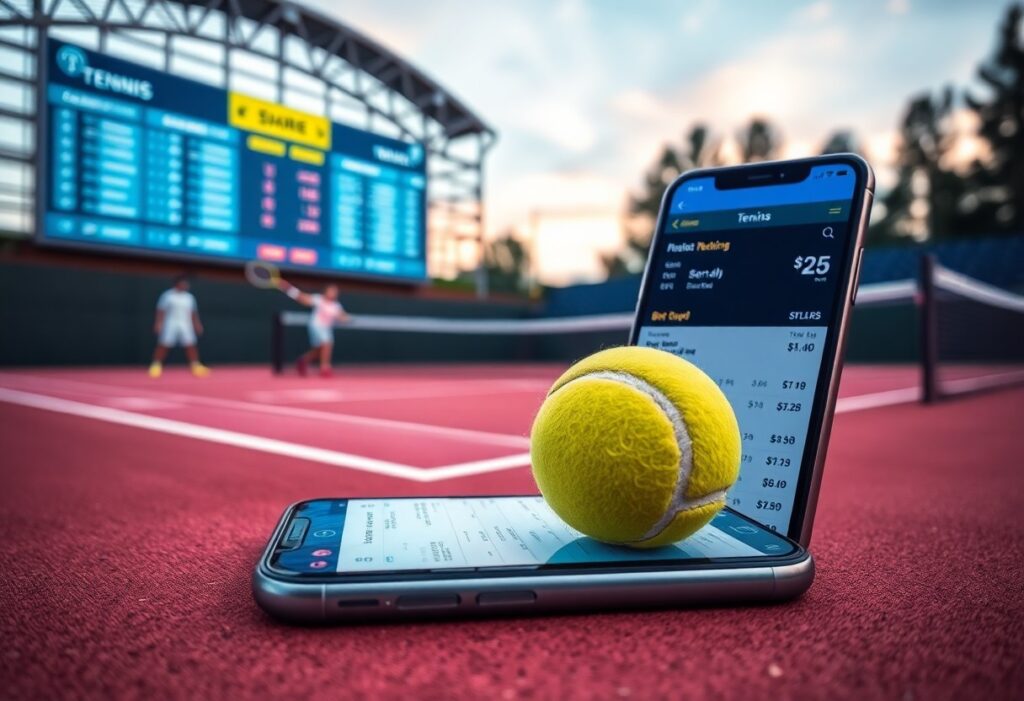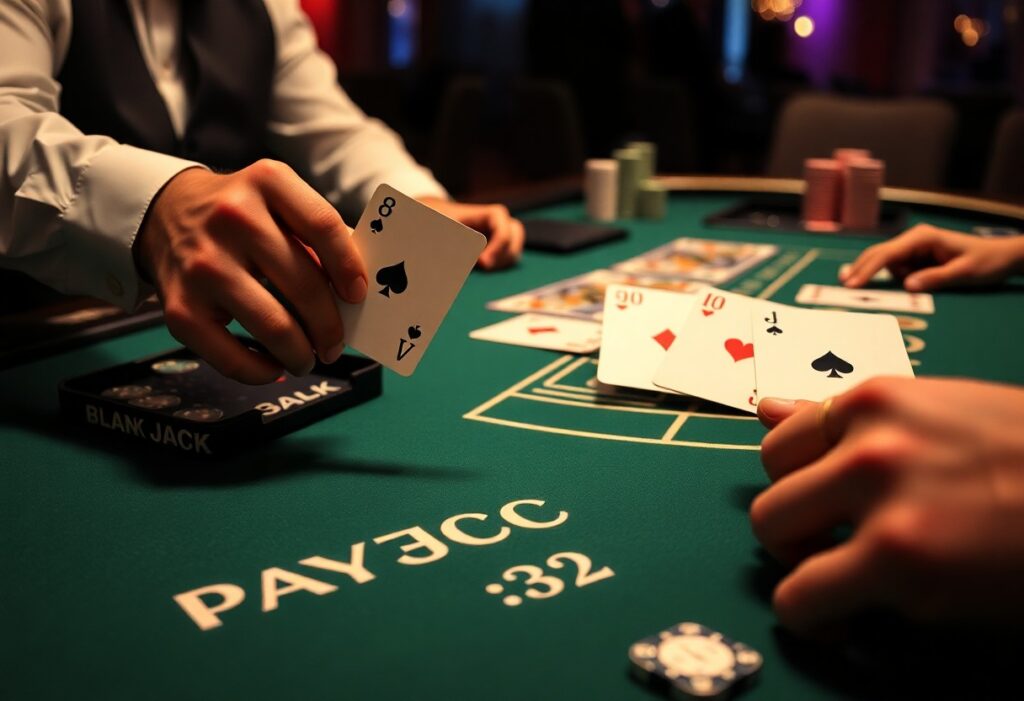
With various elements influencing the outcome of tennis matches, understanding key factors can enhance your betting strategy. Analyzing player form, surface types, head-to-head records, and physical condition is imperative for informed decisions. Additionally, considering weather conditions and tournament significance can sway results. This list highlights important aspects to evaluate, helping you position your bets more effectively and potentially maximizing your returns.
Player Form
Analyzing a player’s form is necessary for informed betting on tennis matches. Factors such as their recent performance, overall consistency, and mental state can heavily influence outcomes. A player in fine form often exhibits confidence and can capitalize on their opponent’s weaknesses, making form a key indicator to evaluate before placing bets.
Recent Match Performance
The last few matches a player has participated in can provide significant insights into their current state. Look at their win-loss record, the quality of their opponents, and the scores in those matches. A string of victories against strong competitors can signify readiness, while losses may indicate underlying issues.
Fitness Levels
Fitness levels play a significant role in a player’s performance. A fit player is more likely to endure long matches and execute strategies effectively. Factors such as injury records, stamina, and recovery times should be assessed, as they can greatly impact match outcomes.
Fitness levels go beyond just physical condition; they encompass injury history, endurance, and recovery ability. A player returning from an injury may not perform at their peak, while those with excellent fitness records can push through challenging matches. Pay attention to any recent injuries or fitness concerns, as they can lead to unexpected results. A well-conditioned athlete can maintain higher levels of intensity throughout the match, giving them a competitive edge.
Head-to-Head Record
Analyzing the head-to-head record between players offers insightful context for upcoming matches. Historical performance can reveal trends, strengths, and weaknesses that are not immediately obvious. Notably, certain players may consistently outperform their opponents in past encounters, giving them a psychological edge in their next meeting.
Previous Encounter Results
Examining the results of previous encounters between competitors provides valuable data for predictions. A player who has dominated their opponent in past matches may hold a significant mental advantage. Moreover, nil-nil results or one-sided victories can help assess how likely it is for the match to swing in one player’s favor.
Surface Preferences
Players often exhibit distinct preferences for specific surfaces, and understanding this can be a game-changer. For instance, a player thriving on clay might struggle on grass or hard courts. Identifying how each competitor performs on various surfaces can inform betting decisions and reveal potential advantages.
Surface preferences not only depend on a player’s past performance but also reveal how well they adapt to different conditions. Statistical analysis shows that certain athletes excel on hard courts while others are strong on clay. Matches on less familiar surfaces can result in unexpected outcomes, making it imperative to incorporate surface impact into betting strategies. A player’s adaptability can significantly influence their success rate, so don’t overlook this vital factor.
Playing Surface
The playing surface significantly impacts player performance and match outcomes. Different surfaces like grass, clay, and hard courts influence factors such as ball speed, bounce, and player movement. Understanding how these surfaces affect players can enhance betting strategies, as some athletes excel on certain surfaces while struggling on others.
Grass vs. Clay
Grass courts favor players with strong serve-and-volley skills and quick reflexes, leading to faster-paced games. In contrast, clay courts slow down the ball, benefiting baseline players who excel in longer rallies. This distinction heavily influences player matchups and outcomes.
Indoor vs. Outdoor
Indoor courts tend to create a more controlled environment, reducing the effects of weather conditions like wind and humidity. Players generally have an advantage on indoor surfaces if they are accustomed to the conditions, as these courts often provide faster play than their outdoor counterparts.
Indoor matches often feature consistent lighting and less atmospheric variation, which can enhance performance and decrease unpredictability. Familiarity with indoor settings can significantly boost players’ confidence and potentially result in stronger performances. Additionally, outdoor matches may be impacted by changing weather, affecting factors such as grip and stamina, thus influencing betting considerations.
Weather Conditions
Weather conditions significantly influence the outcome of tennis matches. Factors such as temperature, humidity, and wind speed can affect player performance and court conditions. Evaluating these elements before placing a bet provides valuable insights into how players might fare under specific weather scenarios, ultimately impacting match results.
Temperature Impacts
Temperature plays a pivotal role in player stamina and performance. Extreme heat may lead to fatigue, while cooler conditions could enhance energy levels. Higher temperatures often favor players accustomed to such climates, while lower temperatures can slow down the game, impacting overall strategy.
Temperature Effects on Performance
| Temperature Range | Impact on Players |
| Below 15°C | Players may struggle with speed and mobility. |
| 15°C – 25°C | Optimal conditions; players perform best. |
| Above 25°C | Increased fatigue; endurance is tested. |
Wind Speed Considerations
Wind speed can dramatically alter match dynamics, affecting ball trajectory and player accuracy. High winds can disrupt serves and groundstrokes, making it difficult for players to maintain control. Those who adapt better to windy conditions may find a tactical advantage, but players who struggle may suffer significant setbacks.
A strong wind can reduce the effectiveness of serves and shots, showcasing a player’s ability to adjust to variable conditions. Players who excel in windy environments typically possess strong baseline skills and a versatile game. Hence, evaluating a player’s performance in similar conditions is vital when considering betting options. Taking into account their historical performance in windy matches may help identify potential risks and opportunities.
Match Importance
Understanding the importance of a match is vital when placing bets on tennis. Matches in high-stakes tournaments, such as Grand Slams, often see players performing at their best due to both prestige and financial rewards. Conversely, casual tournaments may lead to unpredictable outcomes as players may not be highly motivated to win, affecting their performance and your betting decisions.
Tournament Stage
The stage of the tournament significantly influences player performance. Early rounds may yield unexpected results as lower-ranked players capitalize on the opportunity, while later stages typically showcase the top players competing intensely for titles. Assessing players’ historical performance at different tournament stages can provide valuable insights for betting.
Player Motivation
Player motivation plays a pivotal role in match outcomes. Factors like ranking points, personal goals, and previous rivalries can influence a player’s drive to win. An athlete seeking to improve their ranking may display a higher level of commitment than one who’s already secured a spot in the next tournament.
A player’s motivation can be influenced by several factors, including personal stakes, recent injuries, or upcoming competitions. For instance, players fighting to qualify for prestigious tournaments may exhibit heightened enthusiasm and determination. Conversely, those with less to gain or a recent loss might lack focus or even consider conserving energy for future matches. Assessing a player’s recent form and emotional state can provide insight into their commitment level and impact your betting strategy effectively.
Injury Reports
Injury reports are vital for evaluating player performance before placing bets on tennis matches. Keeping track of players’ physical conditions can significantly influence match outcomes, as even minor injuries can affect a player’s ability to compete at their best. Be sure to analyze the latest injury updates to make informed decisions.
Active Injuries
Active injuries can severely hinder a player’s performance ability. When a player is dealing with an ongoing injury, it may impact their movement, stamina, and overall game strategy. Always check for the latest updates on players’ injuries to assess their potential risk in the upcoming matches.
Recovery Status
Recovery status is a key indicator of a player’s readiness to compete. A player nearing full recovery can show signs of improvement, but lingering effects from an injury may still affect their performance. Understanding how recent injuries have impacted players in prior matches is fundamental for effective betting.
Recovery timelines can vary widely based on the severity of the injury. A player returning from a minor injury may exhibit heightened motivation, while another coming back from a serious injury might still face challenges with consistency and confidence. Monitoring post-injury performance in recent matches will give insight into their current form, enabling better predictions on match outcomes.
Betting Odds
Understanding betting odds is fundamental for successful tennis betting. Odds represent the bookmaker’s assessment of a player’s likelihood of winning and directly influence your potential payout. They fluctuate based on various factors, including player performance, injuries, and public sentiment. Finding favorable odds can significantly enhance your betting strategy.
Value Assessment
Value assessment involves analyzing the odds given by bookmakers to determine if they offer a fair reflection of the actual probabilities. Look for discrepancies between your own evaluation of a player’s chances and the provided odds. Identifying these value bets can lead to long-term profitability.
Market Movements
Market movements indicate shifts in betting lines, reflecting changes in public opinion or new information regarding player conditions. Monitoring these changes can offer insights into where the smart money is going and help you adjust your betting strategy accordingly.
Market movements are driven by various influences, including player injuries, performance data, or major news events. Pay attention to betting patterns; significant movements can signal where the majority of the public and sharp bettors are placing their money. A substantial line shift often indicates that a player’s form or condition has changed, and adjustments may need to be made to your bets. Understanding these trends can provide you with an advantage in identifying profitable opportunities.
Player Style
Understanding a player’s style is vital when evaluating matchups in tennis. Styles can significantly affect the outcome, as they determine how players approach the game and respond to various situations. Each player’s preferences, whether aggressive or defensive, can indicate their strengths and weaknesses on the court, influencing betting decisions. Analyzing existing patterns in players’ performances against different styles can provide valuable insights for making informed bets.
Aggressive vs. Defensive
Aggressive players typically take risks, playing with power and seeking to dominate points, while defensive players focus on consistency and making their opponents work. Analyzing how these styles interact helps assess match dynamics. Aggressive players may struggle against skilled defenders who can exploit their mistakes, affecting potential outcomes in betting scenarios.
Serve and Return Skills
Serve and return skills are key components of a player’s style that can sway match results. A player with a strong serve can gain early advantage, while exceptional returners can neutralize serves and pressure opponents. The ability to capitalize on these two aspects often indicates a player’s overall performance potential, making it vital to evaluate these skills when betting.
A well-executed serve can lead to easier points, allowing players to dictate rallies from the start. Furthermore, players with strong return abilities tend to disrupt their opponent’s service games, creating opportunities for breaks and influencing set dynamics. Evaluating historical performance in serve and return statistics against various opponents provides valuable insights and can signal potential match outcomes, making them a vital factor in your betting strategy.
Crowd Influence
The presence of a crowd can significantly impact a player’s performance during a tennis match. Players often thrive on the energy generated by fans, influencing their confidence and willingness to engage in high-stakes rallies. Conversely, overwhelming pressure from a hostile crowd can lead to mistakes or anxiety, affecting the outcome of the match. Understanding how crowd dynamics affect player performance is important when making betting decisions.
Home Court Advantage
Competing on home soil provides a distinct edge for players due to familiar conditions, supportive fans, and reduced travel fatigue. This advantage can be a deciding factor in matches, as local players often feel more comfortable and confident in their environment.
Fan Support
Fan support can be a double-edged sword; it can empower players to perform at their best or lead them to crumble under pressure. Players often feed off the excitement and encouragement from the crowd, which can elevate their game. However, excessive expectations from fans may result in increased stress levels, impacting performance negatively. Evaluating how much support a player has can be pivotal in predicting match outcomes.
Additionally, the type of crowd, whether it leans toward passionate backing or critical opposition, can also play a role. A supportive crowd can create a positive atmosphere, motivating players to elevate their performance. In contrast, a negative response from fans can instill doubt, causing players to lose focus. Understanding the implications of fan support allows for better assessment when betting on matches.
Summing up
Upon reflecting, bettors must weigh various aspects before placing wagers on tennis matches. Factors such as player form, surface preference, head-to-head statistics, injury reports, match conditions, and psychological elements can significantly influence outcomes. Additionally, understanding betting odds and market movements will enhance decision-making. By considering these ten key factors, bettors can develop a well-informed strategy that increases their chances of success in the unpredictable realm of tennis betting.
FAQ
Q: What player statistics should I analyze before placing a bet on a tennis match?
A: It’s important to review players’ head-to-head records, recent match performance, win percentages on specific surfaces, and fitness levels. Analyze how they perform under various conditions like weather and tournament types.
Q: How does player form impact betting decisions in tennis?
A: Player form is necessary as it reflects their recent results and mental state. A player coming off several wins might be more confident, while one with consecutive losses may struggle. Assessing form can guide you in predicting match outcomes.
Q: Why is the playing surface a vital factor in betting on tennis?
A: Different players excel on specific surfaces such as clay, grass, or hard courts. Reviewing players’ performances on these surfaces helps in making informed bets, as some may have strong records on one type of court but struggle on another.



